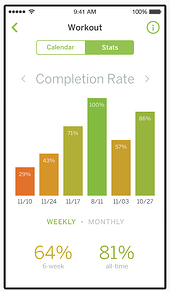Building good habits involves repetition. Lots of it. There’s no easy shortcut, much as we may want a quick fix to anything we are trying to improve: healthful  eating, fewer Netflix binges, clutter-free countertops. The same applies to our students. They may want to procrastinate less, get to class on time, or keep their desks organized, but the uncomfortable truth is that making those changes is, well, uncomfortable. At first. After all, when you or your child are building a brand new habit, there’s a great deal of behind-the-scenes action happening. First, you have to have the insight that your current habit is not leading to your desired outcome: stress-free evenings, easily locating house keys or class handouts, and so on. Second, you need to identify exactly what needs to be done differently in order to achieve a better result. Third, and most important, you need to simultaneously stop an ingrained pattern of behavior and start a brand new pattern, and stick with that new behavior for a while. In other words, you need to stop doing what has become easy and purposely do something difficult. Is it any wonder that it’s so tough to follow through on that intention to build a better habit? Thankfully, we have some great tools that we use to help guide and motivate students more effectively through that fraught “construction phase” of a new habit, before it becomes an easy routine.
eating, fewer Netflix binges, clutter-free countertops. The same applies to our students. They may want to procrastinate less, get to class on time, or keep their desks organized, but the uncomfortable truth is that making those changes is, well, uncomfortable. At first. After all, when you or your child are building a brand new habit, there’s a great deal of behind-the-scenes action happening. First, you have to have the insight that your current habit is not leading to your desired outcome: stress-free evenings, easily locating house keys or class handouts, and so on. Second, you need to identify exactly what needs to be done differently in order to achieve a better result. Third, and most important, you need to simultaneously stop an ingrained pattern of behavior and start a brand new pattern, and stick with that new behavior for a while. In other words, you need to stop doing what has become easy and purposely do something difficult. Is it any wonder that it’s so tough to follow through on that intention to build a better habit? Thankfully, we have some great tools that we use to help guide and motivate students more effectively through that fraught “construction phase” of a new habit, before it becomes an easy routine.
Here’s one such tool that’s great for students and adults: Habit List.
Allow me to share some of my recent vital statistics, gleaned from my use of this app:
- I have walked my dog 23% more often this year than I did in 2015.
- I never make it to the gym on Thursdays.
- I stay within my monthly budget 70% of the time, but never in February.
I know all of this information, and much more, thanks to Habit List. This iPhone app allows you to formulate positive habits and track your progress toward building these habits. This data-tracking capability helps you maintain new behaviors and sustain your momentum when you may be low on motivation. Think about how many times you have felt discouraged about your slow progress toward a goal. Wouldn’t it have been great to have some data - in other words, cold hard facts- to counter your sagging morale after failing to hit your goal of 10,000 steps for a week straight? What if you could see that you did 30% better than last week, or that you came back strong after a slow Monday and Tuesday? Sometimes noting the small successes on your path to building a new habit can make the difference between persisting and dropping it like the mirror ball on New Year’s Eve.
 Many of us Executive Function coaches introduce Habit List to our students to help them form good habits such as remembering to bring their gym clothes on Tuesdays and Thursdays, checking their planner daily, and practicing their cello four times per week. Habit List is flexible and allows for realistic goal-setting. It includes reminders and notifications, which can be helpful at first! You can start with smaller expectations with more difficult habits, “skip” when you’re on vacation or a planned break, and choose essentially any frequency goal for each task.
Many of us Executive Function coaches introduce Habit List to our students to help them form good habits such as remembering to bring their gym clothes on Tuesdays and Thursdays, checking their planner daily, and practicing their cello four times per week. Habit List is flexible and allows for realistic goal-setting. It includes reminders and notifications, which can be helpful at first! You can start with smaller expectations with more difficult habits, “skip” when you’re on vacation or a planned break, and choose essentially any frequency goal for each task.
There’s another big Executive Function skills bonus of using Habit List. Noticing trends on the completion of the tasks allows students to work on their metacognitive skills while they analyze when they are and are not successful and adjust their plan from there. Is there rarely any task completion on Tuesdays? Maybe cello practice should be planned for Monday instead. Looking at data of what tasks are actually happening is an essential tool in supporting students’ success. Eventually, these habits become routine and the student can make room for new habits.
As they become adults, our clients’ target habits will likely become less academic and more wellness-based. Instead of remembering to bring their biology homework, they might want to track their consistency going to the gym. They’ll floss, make their beds, walk their dogs, change their smoke alarm batteries, and eventually build all of these good habits into routines that promote balanced, healthy adult lives. Habit List, along with the arsenal of other tools that Executive Function coaches teach, set our students up for a lifetime of success.
It can be hard for students to build good habits when they juggle too many "really important" activities. Download our Priorities Matrix step-by-step guide below. This structured activity helps both kids and adults uncover their true interests and priorities — and provides a solid foundation for building good time management habits.

